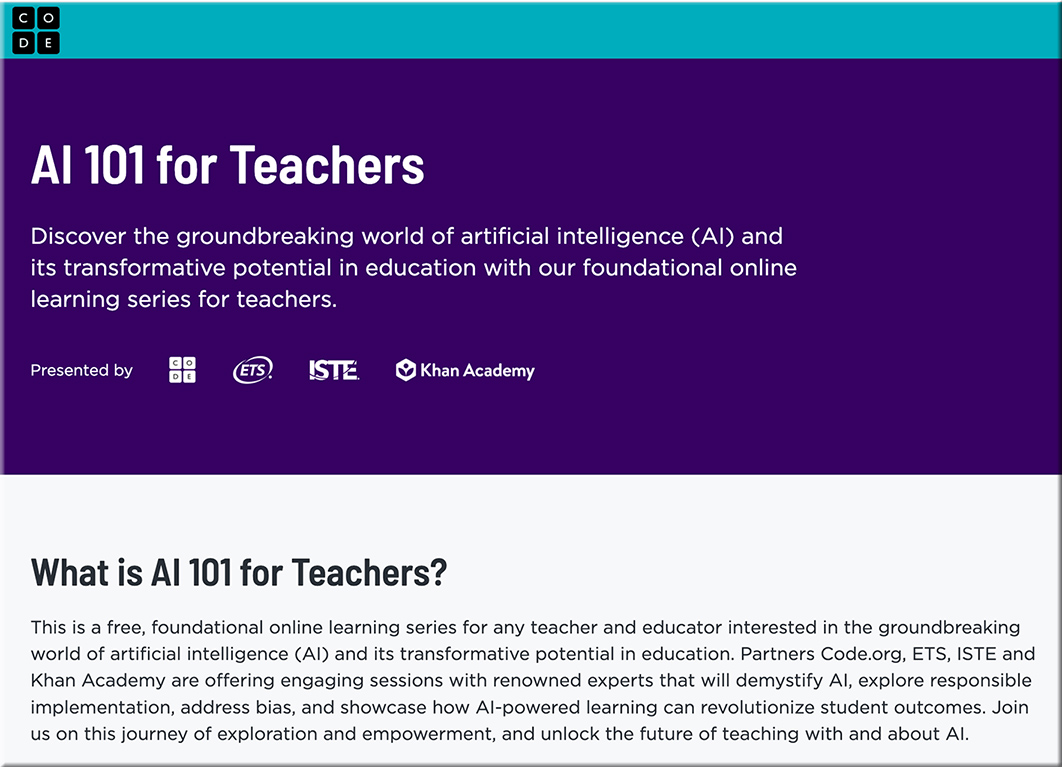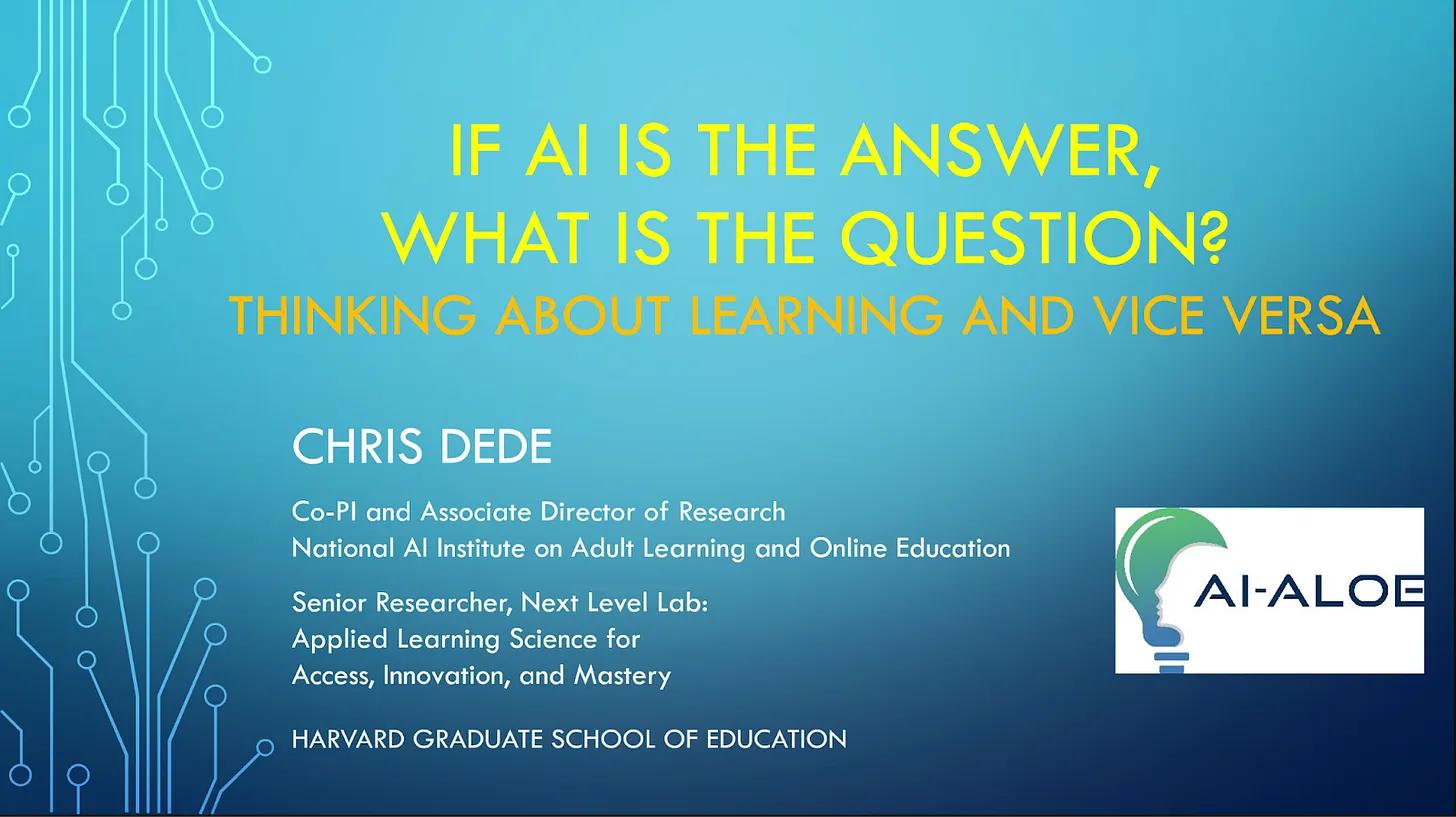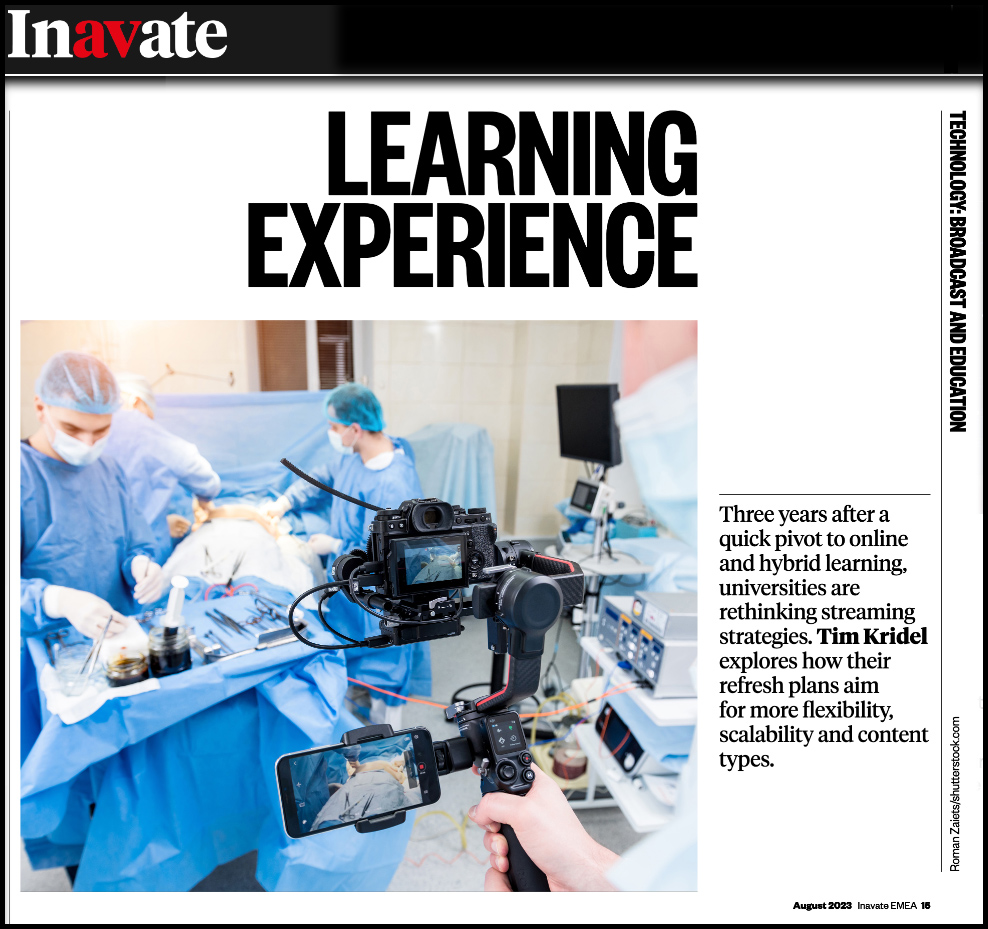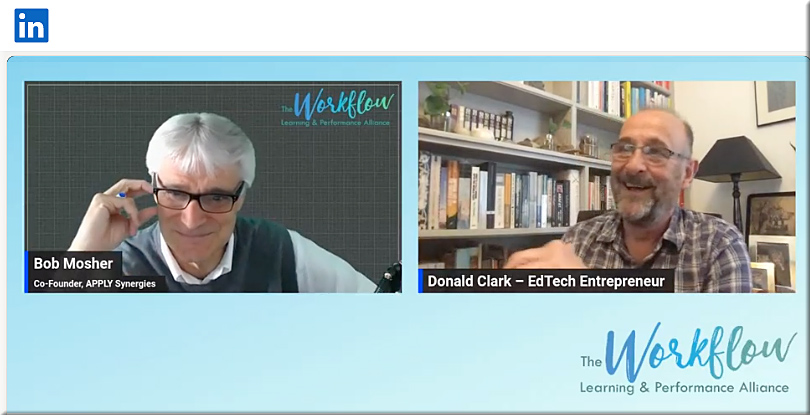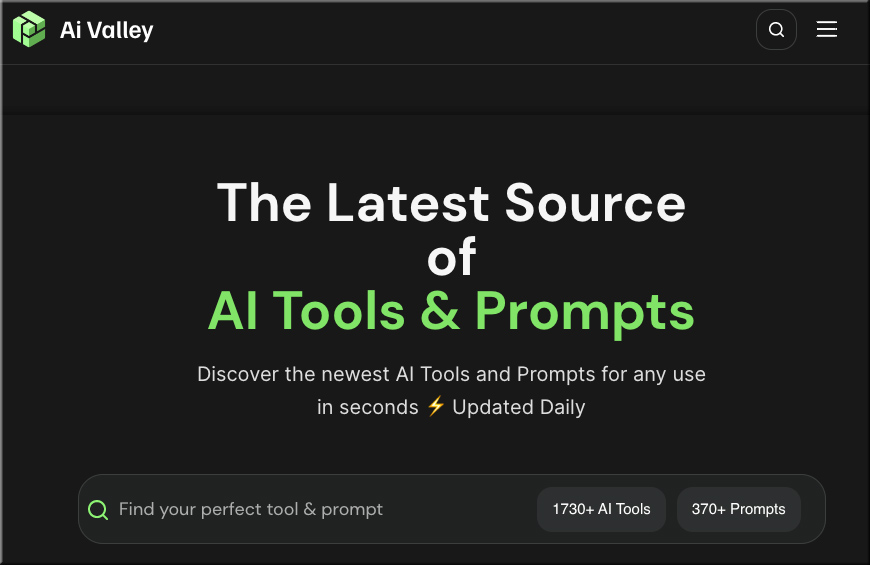DC: Is the future of one of our powerful learning ecosystems more like adding your own desired groups/cohorts, topics, items, etc. to your server? Like a learning-focused type of Discord service? (https://t.co/Vq4dZamBf2)#future #learningecosystems #personalizedlearning pic.twitter.com/wVMWYBN3R1
— Daniel Christian (he/him/his) (@dchristian5) August 17, 2023
The Changing Landscape of Online Education (CHLOE), 2023
Student Demand Moves Higher Ed Toward a Multi-Modal Future
The majority of survey participants report increased student demand for online and hybrid learning juxtaposed with decreased demand for face-to-face courses and programs. Most participants also say that their institutions are aligning or working to align their strategic priorities to meet this demand. Notable findings from the 50+-page report include:
- Face-to-Face enrollment is stagnant or declining.
- Online and hybrid enrollment is growing.
- Institutions are quickly aligning their strategic priorities to meet online/hybrid student demand.
- “Quiet” quality assurance.
What value do you offer? — from linkedin.com by Dan Fitzpatrick — The AI Educator
Excerpt (emphasis DSC):
So, as educators, mentors, and guides to our future generations, we must ask ourselves three pivotal questions:
- What value do we offer to our students?
- What value will they need to offer to the world?
- How are we preparing them to offer that value?
The answers to these questions are crucial, and they will redefine the trajectory of our education system.
We need to create an environment that encourages curiosity, embraces failure as a learning opportunity, and celebrates diversity. We need to teach our students how to learn, how to ask the right questions, and how to think for themselves.
5 Little-Known ChatGPT Prompts to Learn Anything Faster — from medium.com by Eva Keiffenheim
Including templates, you can copy.
Leveraging ChatGPT for learning is the most meaningful skill this year for lifelong learners. But it’s too hard to find resources to master it.
As a learning science nerd, I’ve explored hundreds of prompts over the past months. Most of the advice doesn’t go beyond text summaries and multiple-choice testing.
That’s why I’ve created this article — it merges learning science with prompt writing to help you learn anything faster.
Midjourney AI Art for Teachers (for any kind of teacher, not just Art Teachers) — from The AI Educator on YouTube by Dan Fitzpatrick
From DSC:
This is a very nice, clearly illustrated, free video to get started with the Midjourney (text-to-image) app. Nice work Dan!
Also see Dan’s
AI Generated Immersive Learning Series
What is Academic Integrity in the Era of Generative Artificial intelligence? — from silverliningforlearning.org by Chris Dede
In the new-normal of generative AI, how does one articulate the value of academic integrity? This blog presents my current response in about 2,500 words; a complete answer could fill a sizable book.
Massive amounts of misinformation are disseminated about generative AI, so the first part of my discussion clarifies what large language models (Chat-GPT and its counterparts) can currently do and what they cannot accomplish at this point in time. The second part describes ways in which generative AI can be misused as a means of learning; unfortunately, many people are now advocating for these mistaken applications to education. The third part describes ways in which large language models (LLM), used well, may substantially improve learning and education. I close with a plea for a robust, informed public discussion about these topics and issues.
Dr. Chris Dede and the Necessity of Training Students and Faculty to Improve Their Human Judgment and Work Properly with AIs — from stefanbauschard.substack.com by Stefan Bauschard
We need to stop using test-driven curriculums that train students to listen and to compete against machines, a competition they cannot win. Instead, we need to help them augment their Judgment.
The Creative Ways Teachers Are Using ChatGPT in the Classroom — from time.com by Olivia B. Waxman
Many of the more than a dozen teachers TIME interviewed for this story argue that the way to get kids to care is to proactively use ChatGPT in the classroom.
…
Some of those creative ideas are already in effect at Peninsula High School in Gig Harbor, about an hour from Seattle. In Erin Rossing’s precalculus class, a student got ChatGPT to generate a rap about vectors and trigonometry in the style of Kanye West, while geometry students used the program to write mathematical proofs in the style of raps, which they performed in a classroom competition. In Kara Beloate’s English-Language Arts class, she allowed students reading Shakespeare’s Othello to use ChatGPT to translate lines into modern English to help them understand the text, so that they could spend class time discussing the plot and themes.
AI in Higher Education: Aiding Students’ Academic Journey — from td.org by J. Chris Brown
Topics/sections include:
Automatic Grading and Assessment
AI-Assisted Student Support Services
Intelligent Tutoring Systems
AI Can Help Both Students and Teachers
Shockwaves & Innovations: How Nations Worldwide Are Dealing with AI in Education — from the74million.org by Robin Lake
Lake: Other countries are quickly adopting artificial intelligence in schools. Lessons from Singapore, South Korea, India, China, Finland and Japan.
I found that other developed countries share concerns about students cheating but are moving quickly to use AI to personalize education, enhance language lessons and help teachers with mundane tasks, such as grading. Some of these countries are in the early stages of training teachers to use AI and developing curriculum standards for what students should know and be able to do with the technology.
Several countries began positioning themselves several years ago to invest in AI in education in order to compete in the fourth industrial revolution.
AI in Education — from educationnext.org by John Bailey
The leap into a new era of machine intelligence carries risks and challenges, but also plenty of promise
In the realm of education, this technology will influence how students learn, how teachers work, and ultimately how we structure our education system. Some educators and leaders look forward to these changes with great enthusiasm. Sal Kahn, founder of Khan Academy, went so far as to say in a TED talk that AI has the potential to effect “probably the biggest positive transformation that education has ever seen.” But others warn that AI will enable the spread of misinformation, facilitate cheating in school and college, kill whatever vestiges of individual privacy remain, and cause massive job loss. The challenge is to harness the positive potential while avoiding or mitigating the harm.
Generative AI and education futures — from ucl.ac.uk
Video highlights from Professor Mike Sharples’ keynote address at the 2023 UCL Education Conference, which explored opportunities to prosper with AI as a part of education.
Bringing AI Literacy to High Schools — from by Nikki Goth Itoi
Stanford education researchers collaborated with teachers to develop classroom-ready AI resources for high school instructors across subject areas.
To address these two imperatives, all high schools need access to basic AI tools and training. Yet the reality is that many underserved schools in low-income areas lack the bandwidth, skills, and confidence to guide their students through an AI-powered world. And if the pattern continues, AI will only worsen existing inequities. With this concern top of mind plus initial funding from the McCoy Ethics Center, Lee began recruiting some graduate students and high school teachers to explore how to give more people equal footing in the AI space.
InstructureCon 23 Conference Notes — from onedtech.beehiiv.com by Phil Hill
The company is increasingly emphasizing its portfolio of products built around the Canvas LMS, what they call the Instructure Unified Learning Platform. Perhaps the strongest change in message is the increased emphasis on the EdTech Collective, Instructure’s partner ecosystem. In fact, two of the three conference press releases were on the ecosystem – describing the 850 partners as “a larger partner community than any other LMS provider” and announcing a partnership with Khan Academy with its Khanmigo AI-based tutoring and teaching assistant tool (more on generative AI approach below).
Anthology Together 23 Conference Notes — from philhillaa.com by Glenda Morgan
The Anthology conference, held from July 17-19, marked the second gathering since Blackboard ceased operating as a standalone company and transformed into a brand for a product line.

What stood out was not just the number of added features but the extent to which these enhancements were driven by customer input. There has been a noticeable shift in how Anthology listens to clients, which had been a historical weakness for Blackboard. This positive change was emphasized not only by Anthology executives, but more importantly by customers themselves, even during unscripted side conversations.
D2L Fusion 23 Conference Notes — from onedtech.beehiiv.com
D2L is a slow burn company, and in the past eight years in a good way. The company started working on its move to the cloud, tied to its user experience redesign as Brightspace, in 2014. Five years later, the company’s LMS was essentially all cloud (with one or two client exceptions). More importantly, D2L Brightspace in this time period became fully competitive with Instructure Canvas, winning head-to-head competitions not just due to specialized features but more broadly in terms of general system usability and intuitive design. That multi-year transformation is significant, particularly for a founder-led company.
Learning Experience — from inavateemea.com by Tim Kridel
“Some of the stuff we’re doing is creating templates and workflows that capture multiple feeds: not just the teacher, [but also] the white board, an overhead camera,” Risby says.
“The student can then go in and pick what they look at, so it’s more interactive. You might be watching it the first time to listen to the lecturer, but you might watch the second time to concentrate on the experiment. It makes the stream more valuable.”
The Evolution of Public Libraries — from designinglibraries.org.uk by Ayub Khan
Designing Libraries Director, Ayub Khan, looks at the evolution of public libraries – and the implications for library design
Reinvention
Public libraries have always adapted and reinvented themselves to the changing needs and preferences of their users – and they continue to do so. Books and reading remain central to what libraries do but – it’s a bit of a cliché to say so – they are not just about books nowadays. They are social places at the centre of their communities.
Having worked on the initial design concepts for the new Library of Birmingham, earlier in my career, I know books were only part of the plans. When I started out as a librarian around 75% of library spaces were for books and 25% for other activities and events. Now it’s the other way round.
Presenting to the Association of University Architects — from darcynorman.net by D’Arcy Norman, PhD
Excerpt:
Recently, I had the absolute pleasure to be invited to co-present at the 67th Annual Association of University Architects Conference, conveniently hosted this year in Calgary, and even more conveniently having one day’s sessions housed within the Taylor Institute for Teaching and Learning. Our Vice Provost Teaching and Learning, Dr. Leslie Reid, was invited to share her experience in leading the Taylor Institute, and she brought in Dr. Natasha Kenny and myself to round out the session.
In planning for the session, we decided early on that we didn’t want to do A Presentation™. There would not be slides and slides of text, and no bullet points. We wanted to tell stories, and to learn from the ~100 expert university architects from across North America about how they approach the challenges we’ve faced in the last few years.
We broke the storytelling portion of the session into 3 parts:
- Universality: Building for all or building for some (Leslie)
- Planning: Tension between form and function (Natasha)
- Flexibility: How to be flexible about flexibility (D’Arcy)
Tech & Learning Announces Winners of Best of Show at ISTE 2023 — from techlearning.com
Our annual awards celebrate the products, and businesses behind each one, who are transforming education in schools around the world.
Excerpt:
The evaluation criteria included: ease of use, value, uniqueness in the market, and proof that the product helped make teachers’ lives easier and supported student achievement.
“We received an impressive array of nominations for this year’s awards,” says Christine Weiser, content director for Tech & Learning. “Our judges chose the products that they believed best supported innovation in the classroom and district.
Recording Arts as Reengagement, Social Justice and Pathway — from gettingsmart.com
Key Points
- After a successful career as a recording artist, David “TC” Ellis created Studio 4 in St. Paul to spot budding music stars.
- It became a hangout spot for creative young people, most of whom had “dropped out of school due to boredom and a sense that school wasn’t relevant to their lives and dreams.”
- Ellis and colleagues then opened the High School for Recording Arts in 1998.
Our Learning Future from A to Z — from gettingsmart.com by Louka Parry
Key Points
- Schools and organizations are human systems, filled with opportunities.
- And yet there is a profound difference between building from a foundation of schooling and building from a foundation of learning.
Rather than simply replicate and scale the arrangements of schooling, we must seize the possibility to shift from a schooling system to a learning ecosystem to truly empower learners, educators, and parents to create a virtuous future for themselves and their communities.
Louka Parry
Our challenge will be how we choose to redesign and remake our experiences, environments, and ecosystems so that we unlock our true creative potential and thrive in the future.
We Might Finally Get AI That “Remembers” Us — from theneurondaily.com by Noah Edelman & Pete Huang

Excerpt:
Why it matters: The best AI assistants will be the ones that require the least prompting. They’ll get to know who you are, what you need, and your modus operandi. Profiles are a good starting point, but we believe the game-changer will be larger context windows (that’s nerd-speak for the amount of context ChatGPT can handle).
.
From DSC:
And how about taking this a step further and remembering — or being able to access — our constantly updated Cloud-Based Learning Profiles?
In Finland, the Future of Learning Has Arrived — Just Not Where You Think — from samchaltain.substack.com by Sam Chaltain
It turns out the “Finnish Miracle” is more (and less) miraculous than you think . . .
But whereas Finland’s schools are still characterized by a culture of teaching, Oodi stands as a beacon of learning — self-organizing, emergent, and overflowing with the life force of its inhabitants.
.
From DSC:
As the above got me to thinking about learning spaces, here’s another somewhat relevant item from Steelcase:
Addendum on 6/6/23:
Also relevant to the first item in this posting, see:
Looking for Miracles in the Wrong Places — from nataliewexler.substack.com by Natalie Wexler
An “edutourist” in Finland finds the ideal school, but it isn’t a school at all.
Counterpoint/excerpt:
It sounds appealing, but any country following that route is not only likely to find itself at the bottom of the PISA heap. It’s also likely to do a profound disservice to many of its children, particularly those from less highly educated families, who depend on teachers to impart information they don’t already have and to systematically build their knowledge.
Of course it’s possible for explicit, teacher-directed instruction to be soul-crushing for students. But it certainly doesn’t have to be, and there’s no indication from Mr. X’s account that the students in the schools he visited felt their experience was oppressive. When teachers get good training—of the kind apparently provided in Finland—they know how to engage students in the content they’re teaching and guide them to think about it deeply and analytically.
That’s not oppressive. In fact, it’s the key to enabling students to reach their full potential. In that sense, it’s liberating.
Changed by Our Journey: Engaging Students through Simulive Learning — from er.educause.edu by Lisa Lenze and Megan Costello
In this article, an instructor explains how she took an alternative approach to teaching—simulive learning—and discusses the benefits that have extended to her in-person classrooms.
Excerpts:
Mustering courage, Costello devised a novel way to (1) share the course at times other than when it was regularly scheduled and (2) fully engage with her students in the chat channel during the scheduled class meeting time. Her solution, which she calls simulive learning, required her to record her lectures and watch them with her students. (Courageous, indeed!)
Below, Costello and I discuss what simulive learning looks like, how it works, and how Costello has taken her version of remote synchronous teaching forward into current semesters.
Megan Costello: I took a different approach to remote synchronous online learning at the start of the pandemic. Instead of using traditional videoconferencing software to hold class, I prerecorded, edited, and uploaded videos of my lectures to a streaming website. This website allowed me to specify a time and date to broadcast my lectures to my students. Because the lectures were already prepared, I could watch and participate in the chat with my students as we encountered the materials together during the scheduled class time. I drove conversations in chat, asked questions, and got students engaged as we covered materials for the day. The students had my full attention.
Last night, Jensen Huang of NVIDIA gave his very first live keynote in 4-years.
The most show-stopping moment from the event was when he showed off the real-time AI in video games. A human speaks, the NPC responds, in real time and the dialogue was generated with AI on the fly. pic.twitter.com/TDoUM1zSiy
— Matt Wolfe (@mreflow) May 29, 2023
From DSC:
And how long before that type of interactivity is embedded into learning-related applications/games?!
Nvidia ($960B) is now worth more than:
– Facebook ($665B)
– Tesla ($618B)
– Netflix ($168B)This is a company that started 30 years ago at Denny’s and was for decades only a video game chip maker.
Here’s why Nvidia is surging: pic.twitter.com/km7pECk4Kw
— Peter Yang (@petergyang) May 27, 2023
AI in Learning: The Impact of ChatGPT on L&D & Workflow Learning — from linkedin.com; this event by Bob Mosher features his conversation with Donald Clark
The future is already here.
The 1% who understand it will run the world.
Here’s a list of 24 top resources to get up to speed (for free):
— Misha (@mishadavinci) May 28, 2023
Bill Gates says AI is poised to destroy search engines and Amazon — from futurism.com by Victor Tangermann
Who will win the AI [competition]? (DSC: I substituted the word competition here, as that’s what it is. It’s not a war, it’s a part of America’s way of doing business.)
“Whoever wins the personal agent, that’s the big thing, because you will never go to a search site again, you will never go to a productivity site, you’ll never go to Amazon again,” Gates said during a Goldman Sachs event on AI in San Francisco this week, as quoted by CNBC.
These AI assistants could “read the stuff you don’t have time to read,” he said, allowing users to get to information without having to use a search engine like Google.
EdX launches ChatGPT-powered plugin, learning assistant — from edscoop.com
The online learning firm edX introduced two new tools powered by ChatGPT, the “first of many innovations” in generative AI for the platform.
The online learning platform edX introduced two new tools on Friday based on OpenAI’s ChatGPT technology: an edX plugin for ChatGPT and a learning assistant embedded in the edX platform, called Xpert.
According to the company, its plugin will enable ChatGPT Plus subscribers to discover educational programs and explore learning content such as videos and quizzes across edX’s library of 4,200 courses.
Bing is now the default search for ChatGPT — from theverge.com by Tom Warren; via superhuman.beehiiv.com
The close partnership between Microsoft and OpenAI leads to plug-in interoperability and search defaults.
Excerpt:
OpenAI will start using Bing as the default search experience for ChatGPT. The new search functionality will be rolling out to ChatGPT Plus users today and will be enabled for all free ChatGPT users soon through a plug-in in ChatGPT.
How ChatGPT Could Help or Hurt Students With Disabilities — from chronicle.com by Beth McMurtrie
Excerpt:
- Students with mobility challenges may find it easier to use generative AI tools — such as ChatGPT or Elicit — to help them conduct research if that means they can avoid a trip to the library.
- Students who have trouble navigating conversations — such as those along the autism spectrum — could use these tools for “social scripting.” In that scenario, they might ask ChatGPT to give them three ways to start a conversation with classmates about a group project.
- Students who have trouble organizing their thoughts might benefit from asking a generative AI tool to suggest an opening paragraph for an essay they’re working on — not to plagiarize, but to help them get over “the terror of the blank page,” says Karen Costa, a faculty-development facilitator who, among other things, focuses on teaching, learning, and living with ADHD. “AI can help build momentum.”
- ChatGPT is good at productive repetition. That is a practice most teachers use anyway to reinforce learning. But AI can take that to the next level by allowing students who have trouble processing information to repeatedly generate examples, definitions, questions, and scenarios of concepts they are learning.
It’s not all on you to figure this out and have all the answers. Partner with your students and explore this together.
A new antibiotic, discovered with artificial intelligence, may defeat a dangerous superbug — from edition.cnn.com by Brenda Goodman
8 YouTube Channels to Learn AI — from techthatmatters.beehiiv.com by Harsh Makadia
- The AI Advantage (link)
- Jason West (link)
- TheAIGRID (link)
- Prompt Engineering (link)
- Matt Wolfe (link)
- Two-Minute Papers (link)
- Brett Malinowski (link)
- 10X Income (link)
Artificial Intelligence and the Future of Teaching and Learning | Insights and Recommendations — with thanks to Robert Gibson on LinkedIn for this resource
Being a new teacher is hard. Having a good mentor can help — from npr.org by Cory Turner
Excerpt:
[Besides this article’s focus on mentorship]
In March, I reported a pair of stories from Jackson, Miss., where the school district is paying for unlicensed classroom aides to go back to school and get their master’s degrees.
In April, I told the story of a remarkable idea: A new high school in San Antonio dedicated entirely to training high-schoolers in the art and science of good teaching.
From DSC:
I would add a few more items:
- Significantly reduce the impact of legislators on K-12. If they do vote on something that would impact schools, each legislator that votes on such legislation must first spend at least ___ week(s) observing in some of the schools that would be impacted before even starting to draft legislation and/or debate on the topic(s).
- Instead, turn over more control and power to the students, teachers, K12 administrators, parents, and school boards.
- Provide more choice, more control as each student can handle it.
- Stop the one-size fits all system. Instead use AI-based systems to provide more personalized learning.
- Develop more hybrid programs — but this time I’m talking mixing what we’ve known as public education with homeschooling and smaller learning pods. Let’s expand what’s included when we discuss “learning spaces.”
- Strive for a love of learning — vs. competition and developing gameplayers
- Support makerspaces, entrepreneurship, and experiments
- Speaking of experiments, I would recommend developing more bold experiments outside of the current systems.
Along the lines of potential solutions/visions, see:
Why ‘System Transformation’ Is Likely A Pipe Dream — from michaelbhorn.substack.com by Michael Horn
But I’m for System Replacement
Excerpt:
Foremost among them is this: Despite all the fancy models and white papers around what are all the levers to pull in order to transform a system, system transformation almost never happens by changing the fundamental tenets of the system itself. Instead, it comes from replacing the system with a brand-new system.
To start to understand why, consider the complicated system in which public schools find themselves. As Thomas Arnett explained, they are one part of a vast value network of federal, state, and local regulators, voters and taxpayers, parents and students, teachers, administrators, unions, curriculum providers, school vendors, public infrastructure, higher education institutions, and more.
New ideas, programs, or entities that don’t fit into these processes, priorities, and cost structures are simply not plug-compatible into that value network. They consequently get rejected, tossed to the fringe, or altered to meet the needs of the existing actors in the value network.










